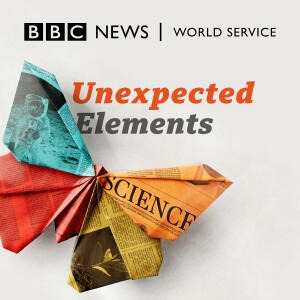
This week Science in Action examines the evidence around the Trump Administration’s emergency use authorisation of convalescent plasma therapy for the treatment of Covid-19. Donald Trump described its US-wide roll-out as ‘historic’ but the majority of scientists and doctors disagree, questioning the scientific basis for the government’s decision. Roland Pease talks to Mayo Clinic’s Michael Joyner, the leader of the convalescent plasma therapy study on which the action was based. The Mayo Clinic trial involved a large number of patients but none of them were compared to Covid-19 patients who were not treated with convalescent plasma. Trials that incorporate that comparison are the only way to properly assess the therapy’s effectiveness. Roland talks to Martin Landray of the University of Oxford who is testing convalescent plasma therapy in the UK’s Recovery randomised control trial, and to medical ethicist Alison Bateman-House of the New York University Grossman School of Medicine.
We also talk to nanotechnologist Marc Miskin about the million-strong army of microscopic robots he’s creating in his lab at the University of Pennsylvania.
The idea of creating underwater habitats has captured the imagination of writers, thinkers and scientists for decades. However, despite numerous grand visions, these dreams of aquatic metropolises have not yet come to fruition. Crowdscience listener and scuba enthusiast Jack wonders whether - given improved technology and the growing environmental pressures facing humans on land - it is time to reconsider the ocean as an alternative permanent living space for humans. Marnie Chesterton dons her flippers for Crowdscience in search of the oceanographers and architects who have dedicated their lives to designing vessels, labs and underwater habitats. She explores whether oceanic cities remain a sci-fi dream or a realistic solution to some of our modern challenges. Can the oceans’ largely unexplored resources be harnessed to support living underwater?
(Main image: New York lab tests serum from recovered covid-19 patients for possible therapy. Credit: Misha Friedman / Getty Images)
view more
More Episodes
Supermassive numbers
 2024-11-08
2024-11-08
 2024-11-08
2024-11-08
The Swing of Things
 2024-11-01
2024-11-01
 2024-11-01
2024-11-01
Mystery blobs
 2024-10-25
2024-10-25
 2024-10-25
2024-10-25
TV made me do it
 2024-10-18
2024-10-18
 2024-10-18
2024-10-18
The world's longest treasure hunt
 2024-10-11
2024-10-11
 2024-10-11
2024-10-11
Science to make you smile
 2024-10-04
2024-10-04
 2024-10-04
2024-10-04
All things Oregon!
 2024-09-27
2024-09-27
 2024-09-27
2024-09-27
Ngā Wai Hono i te Pō: The new Māori Kuini
 2024-09-13
2024-09-13
 2024-09-13
2024-09-13
Thrillseekers
 2024-09-06
2024-09-06
 2024-09-06
2024-09-06
The world's worst tourist
 2024-08-30
2024-08-30
 2024-08-30
2024-08-30
A sticky situation
 2024-08-23
2024-08-23
 2024-08-23
2024-08-23
The only one
 2024-08-16
2024-08-16
 2024-08-16
2024-08-16
Let them eat crab
 2024-08-09
2024-08-09
 2024-08-09
2024-08-09
Can I eat it?
 2024-08-02
2024-08-02
 2024-08-02
2024-08-02
Breaking, climbing, and surfing
 2024-07-26
2024-07-26
 2024-07-26
2024-07-26
Marriage madness
 2024-07-19
2024-07-19
 2024-07-19
2024-07-19
Political Jet Lag
 2024-07-12
2024-07-12
 2024-07-12
2024-07-12
Mushroom magic
 2024-07-05
2024-07-05
 2024-07-05
2024-07-05
Lights out
 2024-06-28
2024-06-28
 2024-06-28
2024-06-28
012345678910111213141516171819
Create your
podcast in
minutes
- Full-featured podcast site
- Unlimited storage and bandwidth
- Comprehensive podcast stats
- Distribute to Apple Podcasts, Spotify, and more
- Make money with your podcast
It is Free
- Privacy Policy
- Cookie Policy
- Terms of Use
- Consent Preferences
- Copyright © 2015-2024 Podbean.com



